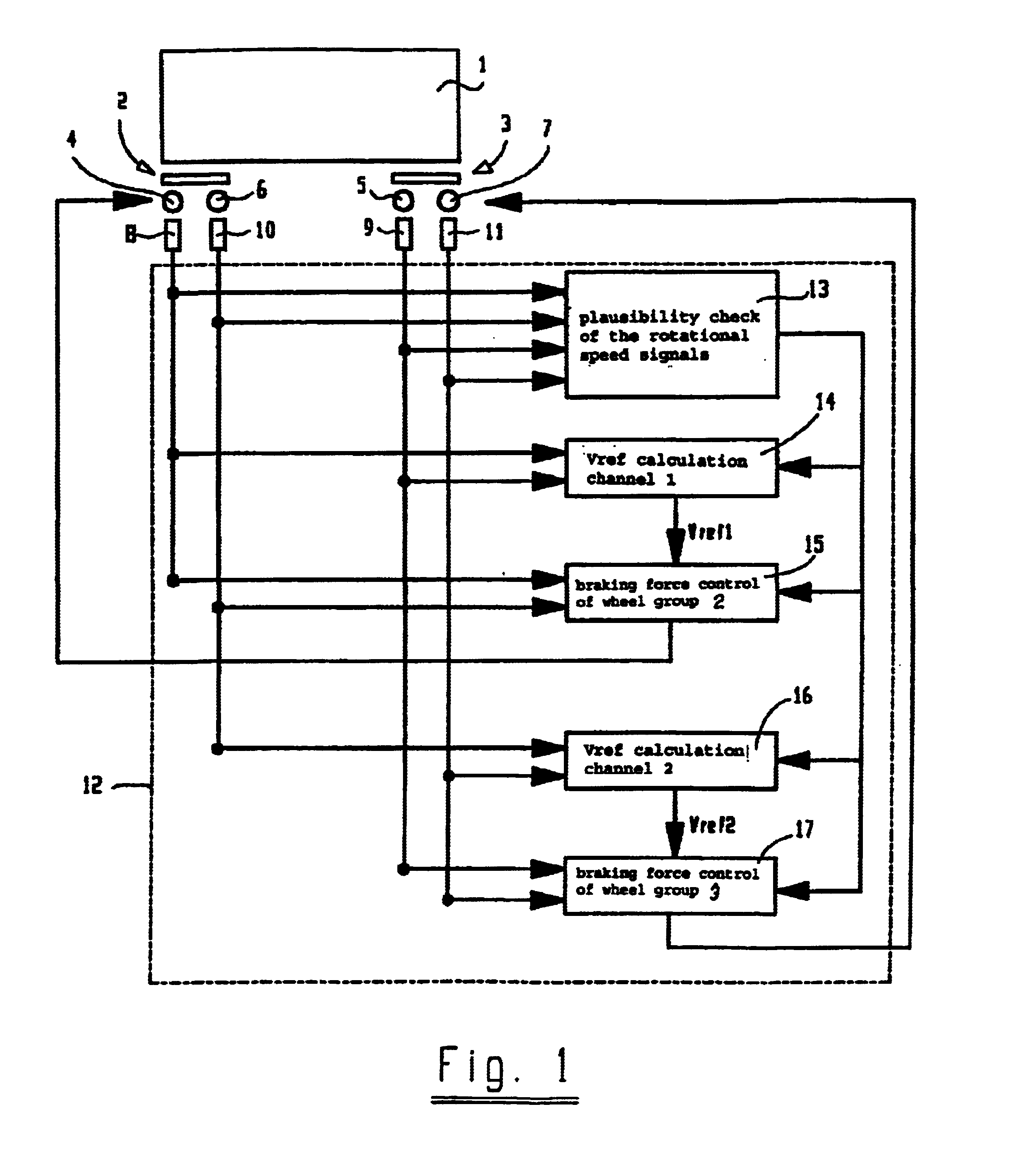Braking system for vehicle provided with ABS or an anti-skid protection system
a technology of anti-skid protection and braking system, which is applied in the direction of braking system, mechanical equipment, transportation and packaging, etc., can solve the problems of error in computing the reference speed, no longer being able to control the corresponding assigned wheels, and unable to calculate the reference speed. , to achieve the effect of improving driving safety
- Summary
- Abstract
- Description
- Claims
- Application Information
AI Technical Summary
Benefits of technology
Problems solved by technology
Method used
Image
Examples
Embodiment Construction
[0027]FIG. 1 illustrates a vehicle 1 with a first wheel group 2 and a second wheel group 3. The two wheel groups 2, 3 may, for example, be bogies of a rail vehicle and each has a first axle 4, 5 and a second axle 6,7 respectively. One rotational wheel speed sensor 8-11 respectively is assigned to the axles 4-7.
[0028]The rotational wheel speed sensors 8-11 are connected with a brake control unit 12 which is shown here only schematically. In the brake control unit 12, a plausibility check 13 is implemented which is to detect faulty or “disturbed” rotational wheel speed signals and optionally separate them.
[0029]The brake control unit 12 also has two channels for the separate or independent calculation of one reference speed respectively approximated to the actual vehicle speed. Brakes (not shown) provided in the vehicle are assigned to a first or to a second group. Here, the first group is formed by the brakes of the first wheel group 2, and the second group is formed by the brakes of...
PUM
 Login to View More
Login to View More Abstract
Description
Claims
Application Information
 Login to View More
Login to View More - R&D
- Intellectual Property
- Life Sciences
- Materials
- Tech Scout
- Unparalleled Data Quality
- Higher Quality Content
- 60% Fewer Hallucinations
Browse by: Latest US Patents, China's latest patents, Technical Efficacy Thesaurus, Application Domain, Technology Topic, Popular Technical Reports.
© 2025 PatSnap. All rights reserved.Legal|Privacy policy|Modern Slavery Act Transparency Statement|Sitemap|About US| Contact US: help@patsnap.com



